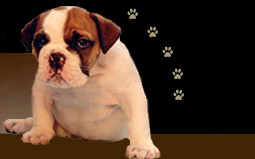.
.
.
.
Although the scientific term 'Pectus Excavatum' is sometimes used as a synonym for the Swimming Puppy Syndrome, these are two entirely different conditions that can occur independently or simultaneously.
Pectus excavatum is a severe deformity resulting from intrusion of the breastbone (sternum) into the chest cavity (a deformity of the chest).
The main symptom of a swimmer puppy is his inability to stand or walk by the normal age of three weeks (a locomotor dysfunction). The puppy paddles his legs much like a turtle, hence the term 'swimmer'.
Other symptoms may develop as a consequence of the unnatural position. Swimmer puppies appear to have flattened or widened chests, probably from lying on their stomachs. Pectus excavatum can also occur in flat-chested puppies, hence probably the confusion. Also note that the lay name for Pectus Excavatum is funnel chest, not flat chest.
For more info about Swimmer Puppies please read the following:









